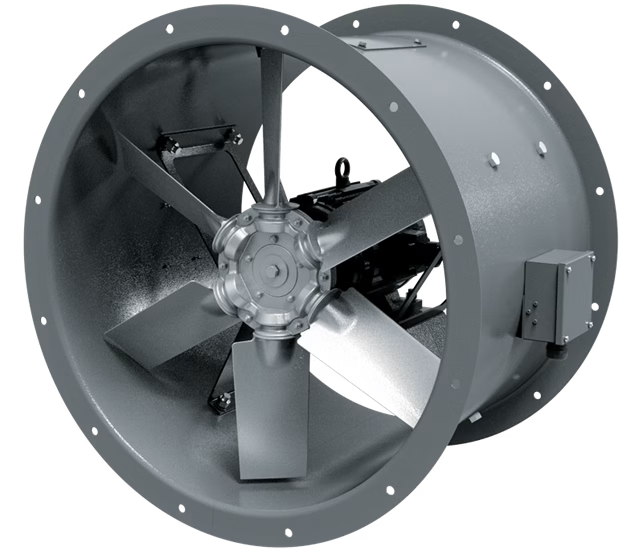Ventilation is a crucial part of any modern building, but when it comes to fire safety, it plays a vital role. In the event of a fire, a well-designed ventilation system can save lives and minimize damage.
So, how do fire safety solutions work? And what specific options are available? Let’s figure it out.
Why is ventilation so important?
Fire, smoke, people in panic… In such moments, it’s not just about evacuating quickly, but also about effectively removing smoke and toxic gases. That’s exactly where smoke extraction systems come in handy.
Fire safety ventilation must be specifically designed to:
- quickly expel smoke from the building;
- prevent it from spreading;
- reduce the air temperature in the premises.
When the system works correctly, people can evacuate safely and in the shortest time possible.
Smoke extraction solutions
A smoke extraction fan is one of the most effective solutions for preventing the spread of smoke in a building. These devices operate at high temperatures and cope with the intense demands that arise during a fire.
Here are some types of such fans:
- Axial – ideal for large spaces with high airflow requirements.
- Centrifugal – the best choice for more localized areas like corridors or lobbies.
- Jet fans – used for parking lots and large, open spaces where quick smoke removal is necessary.
Blauberg, a renowned German brand in the ventilation industry, offers solutions for such tasks. Their products are known for high energy efficiency and reliability. For example, their axial fans are designed to work in the most challenging conditions and can be used for various types of buildings.
How does it work?
The mechanism of a system looks like this:
- In the event of a fire, the smoke extraction fans are activated.
- They start extracting smoke from the premises, improving visibility and reducing the concentration of toxic substances.
- Simultaneously, fire suppression systems (if available) activate, and the evacuation process speeds up.
This is critical because when an emergency occurs, buildings need to be ready for extreme measures.
What else should be considered
Fire safety also involves additional elements:
- dampers – for protecting ventilation ducts;
- accessories – such as special valves that close ducts in case of overheating;
- frequency converters – these regulate the speed of the fans, which can also be important for effective smoke extraction.
It’s a complete set of solutions that requires attention to every detail. Mistakes can cost lives, so it’s important to design everything with precision.
Concluding remarks
Thus, a fire safety ventilation solution is not something abstract or secondary. It’s one of the key parts of modern construction. Properly designed ventilation systems are essential for ensuring occupant safety and minimizing fire damage. By selecting the right equipment and considering all necessary components, buildings can be better prepared for emergencies and protect both lives and property.

